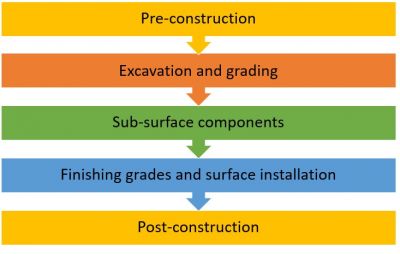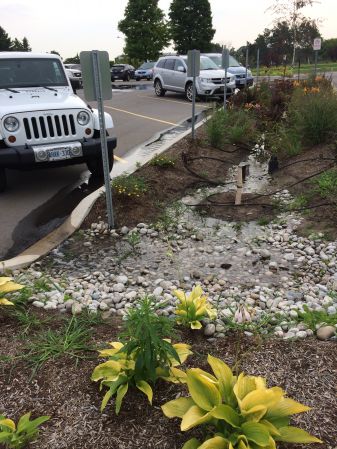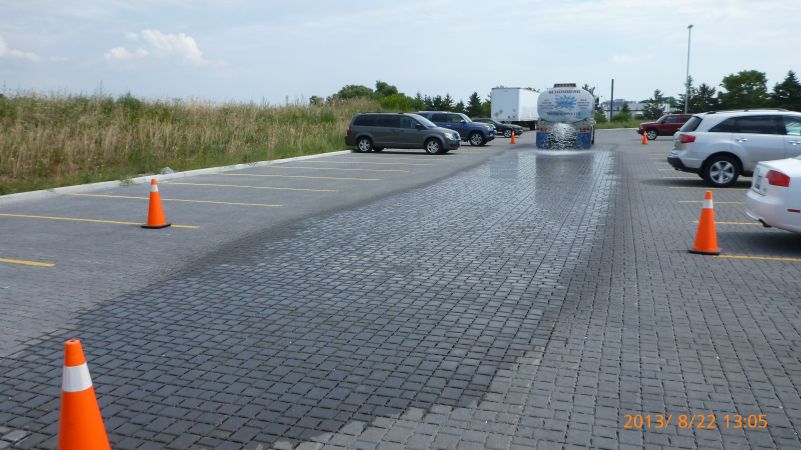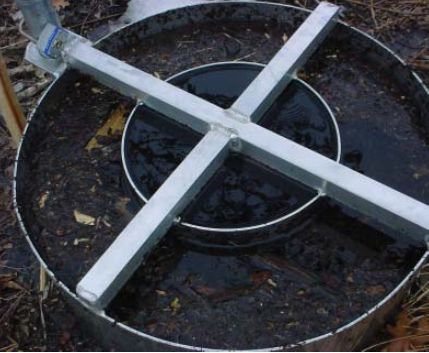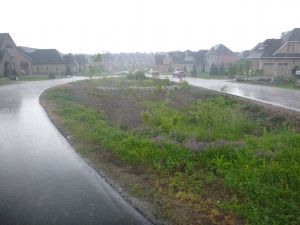Difference between revisions of "Post-construction"
Kyle menken (talk | contribs) m |
Dean Young (talk | contribs) |
||
| (One intermediate revision by one other user not shown) | |||
| Line 7: | Line 7: | ||
==Overview== | ==Overview== | ||
This section gives guidance for project managers, engineers, and contractors on post-construction verification | This section gives guidance for project managers, engineers, and contractors on post-construction verification procedures. | ||
==Addressing deficiencies== | ==Addressing deficiencies== | ||
| Line 14: | Line 14: | ||
==Final certification== | ==Final certification== | ||
{{:Final Certification}} | {{:Final Certification}} | ||
==References== | |||
<references/> | |||
Latest revision as of 18:59, 3 October 2022
The construction guidance in this section applies to all sub-surface and ground-level LID practices: bioretention gardens, bioswales, rain gardens, exfiltration trenches, enhanced swales, permeable pavements, infiltration trenches, infiltration chambers, and soakaways.
Overview[edit]
This section gives guidance for project managers, engineers, and contractors on post-construction verification procedures.
Addressing deficiencies[edit]
Prior to passing responsibility to the landowner, contractors must ensure that any deficiencies in the LID feature’s construction are addressed. Keep in-mind what mistakes must be avoided during each construction task.
Final certification[edit]
Final inspection requirements are in-place to ensure that a final site-wide inspection is performed and that mitigation can occur before the contractor is relieved of responsibility. Final certifications are performed by knowledgeable personnel, such as the design engineer, who are qualified to ensure that LID features are operating as intended. This stage is critically important, as it is the last opportunity for issues to be resolved before the property owner assumes responsibility of the practice. Four (4) levels of inspection exist for final inspections of LID infiltration and filtration practices. The level of inspection, or combination of tests, that is selected is dependent on the goals of the assessment and feasibility of each inspection. A substantial amount of guidance is available in Low Impact Development Certification Protocols: Bioretention Practices.[1]
Visual Inspection (Level 1)
This qualitative method is low cost and requires minimal effort to conduct. Visual inspection should be used as an initial step to determine if the LID practice is operating properly. Visual inspections can be performed during dry weather and wet weather to examine various aspects of LID performance, such as the following:
- draw-down time
- ponded water
- soil properties
- plant cover and plant health
- sedimentation
Surface Infiltration Capacity Testing (Level 2)
Level 2 includes the employment of quantitive methods of testing and data collection. These tasks are also cost-effective and can establish if the LID feature was built in conformance with the design specifications. Some level 2 tests include the following:
- soil sampling and testing
- elevation surveys
- infiltration testing
- synthetic runoff testing
Continuous Water Level Monitoring (Level 3)
Site infiltration rates can be measured with greater accuracy through continuous water level monitoring. This monitoring approach evaluates seasonal infiltration performance through the monitoring of temperature and groundwater levels. The following conditions and equipment are necessary for continuous water level monitoring:
- A perforated observation well
- A water level logger
- A rain gauge within 5 km of the site
Using rainfall and water level data can provide an understanding of drawdown times after variously sized storms.
Long-term Monitoring (Level 4)
High-intensity monitoring is a comprehensive but expensive approach to assessing peak flow reduction and water volume reduction during natural runoff events. These reductions can be quantified by completing a water budget during natural storm events, specifically through the measurement of inflow and outflow. Pollutant load reductions can also be quantified with the appropriate technology. Long-term monitoring is especially recommended if the LID feature that is the subject of the test is the first of its kind in its given jurisdiction, if geologic conditions pose a concern, or if the feature is being implemented to protect sensitive and significant natural features.
References[edit]
- ↑ CVC. 2015. Low Impact Development Certification Protocols: Bioretention Practices. Version 1.0 . https://cvc.ca/wp-content/uploads//2021/07/2016-04-21-web-version-CVCbioretentionCertificationProtocols.pdf
- ↑ CVC. 2012. Low Impact Development Construction Guide. Version 1.0. Photo. https://cvc.ca/wp-content/uploads/2013/03/CVC-LID-Construction-Guide-Book.pdf
